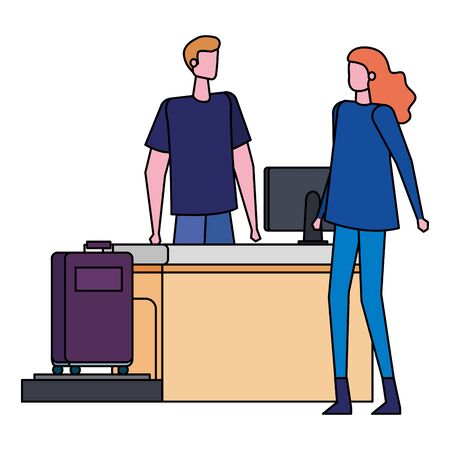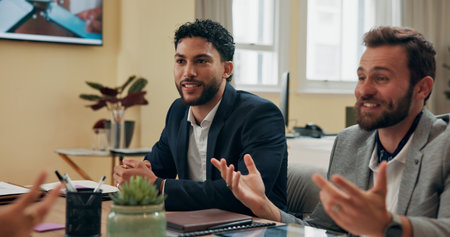Understanding Business Formal Dress Code
In the American workplace, the business formal dress code is considered the gold standard for job interviews in many traditional industries such as finance, law, and corporate management. Understanding what qualifies as business formal can help you make a strong first impression and show that you respect both the company and its culture.
What is Business Formal Attire?
Business formal attire refers to highly professional clothing that communicates seriousness and professionalism. This style is often expected for high-stakes meetings, executive roles, or companies with a conservative culture. The focus is on neatness, classic cuts, and neutral colors. Below is a simple breakdown of common expectations for men and women:
Typical Business Formal Outfits
| For Men | For Women |
|---|---|
| Dark-colored suit (navy, black, or charcoal) | Tailored pantsuit or skirt suit in dark colors |
| Long-sleeved dress shirt (white or light blue) | Conservative blouse or shell (solid color or subtle pattern) |
| Tie (silk tie with subtle patterns) | Closed-toe pumps or flats (1-2 inch heel) |
| Dress shoes (black or dark brown leather) | Pantyhose if wearing a skirt |
| Belt matching shoes | Minimal jewelry and makeup |
| Minimal accessories (watch, simple cufflinks) | Structured handbag or professional tote |
Additional Tips for Nailing Business Formal
- Grooming matters: Make sure hair is neat, facial hair is trimmed, and nails are clean.
- Avoid bold colors: Stick to neutral tones and avoid flashy prints or accessories.
- Shoes should be polished: Scuffed shoes can undermine an otherwise sharp look.
- No strong fragrances: Many offices have scent-free policies; keep perfume or cologne minimal.
This attention to detail shows you understand American business etiquette and are ready to fit into a professional environment. Knowing these basics will set the tone for your interview and help you feel confident walking through those doors.
2. Demystifying Business Casual for Interviews
What Does Business Casual Really Mean?
Business casual can feel a bit confusing, especially since the definition varies between companies and industries in the United States. In general, business casual is less formal than traditional business attire but still professional and polished. The goal is to look neat, approachable, and put-together without being too relaxed.
Acceptable Choices for Business Casual Interview Attire
| For Men | For Women |
|---|---|
|
|
Subtle Differences to Note
- Avoid jeans, even if they are dark-wash and look nice. Most American companies consider jeans too casual for an interview unless specified otherwise.
- Ties are generally optional for men in business casual settings but wearing one is never a mistake if you’re unsure.
- Dresses should be modest in length and fit—think knee-length or longer and avoid anything too tight.
- Shoes should always be clean and professional—skip sneakers, sandals, or anything flashy.
How to Avoid Common Business Casual Mistakes
- Avoid graphic t-shirts, bold logos, or loud patterns. Solid colors and simple prints are safest.
- No athletic wear: sweatpants, leggings (unless under a long tunic), hoodies, or baseball caps aren’t appropriate.
- Don’t go overboard with perfume, cologne, or flashy jewelry; keep your look understated.
- If you’re not sure what’s appropriate, it’s always better to err on the side of being slightly more formal.
- Make sure your clothes are ironed, free of stains, and fit well—presentation matters!
Quick Tip:
If you have an interview at a company with a startup vibe or a creative agency, you can add a touch of personality to your business casual outfit with a unique accessory or pop of color—but always keep it professional and subtle.

3. When to Wear Business Formal vs. Business Casual
Choosing the right outfit for a job interview in the U.S. can make a big difference in how you are perceived. Understanding when to wear business formal versus business casual is all about knowing the industry, the company culture, and the specific role you are applying for.
Industry Expectations
Different industries have different standards when it comes to interview attire. Here’s a simple table to help you decide:
| Industry | Typical Dress Code | Recommended Attire |
|---|---|---|
| Finance, Law, Consulting | Business Formal | Suit, tie, dress shoes (men); Suit or professional dress with closed-toe shoes (women) |
| Tech, Startups, Creative Fields | Business Casual | Collared shirt or blouse with slacks/skirt; Blazer optional; Clean shoes |
| Healthcare (Admin/Executive Roles) | Business Formal | Conservative suit, minimal accessories |
| Retail, Hospitality | Business Casual | Polo or button-down shirt with khakis or skirt; Simple dress shoes |
| Education & Nonprofits | Business Casual/Varies | Blouse/shirt with slacks or skirt; Modest and neat appearance |
Company Culture Research
No matter the industry, companies can have their own unique cultures. Check the company’s website, social media, or LinkedIn profiles to see what employees typically wear. If in doubt, it’s always safer to be slightly overdressed than underdressed.
Bigger Companies vs. Small Businesses
- Bigger companies: Often follow stricter dress codes and lean towards business formal.
- Small businesses/startups: May prefer a relaxed vibe, so business casual is usually fine.
The Role Matters Too!
The level of the position also influences what you should wear:
| Position Level | Suggested Dress Code |
|---|---|
| Entry-Level Roles | Mainly business casual unless otherwise noted in the invitation. |
| Mid-Level/Managerial Roles | Aim for business formal to show professionalism and leadership potential. |
| C-Suite/Executive Roles | Always business formal—this demonstrates authority and respect for the role. |
A Quick Checklist Before Your Interview:
- Research the company and industry online.
- If unsure, contact HR and politely ask about their preferred interview attire.
- Aim for clean, well-fitting clothes—regardless of style.
- Avoid overly bright colors and flashy accessories for most interviews.
4. American Cultural Insights: First Impressions and Professionalism
In the United States, first impressions are incredibly important, especially in job interviews. Americans often believe that how you present yourself in those first few moments says a lot about your attitude, professionalism, and whether you’ll fit into their company culture. The way you dress for an interview is a big part of making that all-important first impression.
How Attire Shapes Perceptions
Your outfit sends a message before you even speak. For example, showing up in business formal attire tells interviewers that you take the opportunity seriously and respect the company’s expectations. On the other hand, choosing business casual—when it fits the company’s culture—shows that you understand their environment and can blend in easily.
Business Formal vs. Business Casual: Common Perceptions
| Dress Code | Perceived Message | Best For |
|---|---|---|
| Business Formal | Serious, polished, highly professional, detail-oriented | Finance, law, corporate offices, executive roles |
| Business Casual | Approachable, adaptable, modern, team-oriented | Tech companies, creative agencies, startups |
The Role of Fit and Grooming
Beyond choosing between formal or casual, Americans also notice if your clothes fit well and if you appear neat and well-groomed. Wrinkled shirts or scuffed shoes may give the impression that you’re careless with details. Cleanliness and tidy hair show respect for yourself and others—qualities valued across all industries.
Quick Tips for Making a Strong First Impression:
- When in doubt, dress slightly more formally than you think is needed.
- Pay attention to company culture—look at employee photos on LinkedIn or the company website.
- Keep accessories simple and avoid overpowering fragrances.
- Make sure your clothes are clean, pressed, and fit comfortably.
- A confident smile and good posture go a long way!
The right outfit helps set a positive tone for your interview and shows potential employers that you’re ready to contribute as a true professional.
5. Practical Tips for Navigating Interview Dress Codes
Understand the Company Culture Before You Dress
The first step to nailing your interview outfit is understanding the companys culture. Is the organization traditional and conservative, or modern and laid-back? Here are some easy ways to get a sense of what’s expected:
- Check the company website: Many companies have photos or videos of employees at work.
- Look at their social media: LinkedIn, Instagram, and Facebook can offer clues about daily attire.
- Read recent news articles: Sometimes coverage of the company includes event photos with employees.
Sample Company Culture Research Table
| Company Type | Common Dress Code | Where to Research |
|---|---|---|
| Law Firm | Business Formal | Website & LinkedIn photos |
| Tech Startup | Business Casual | Instagram & Twitter feeds |
| Finance/Banking | Business Formal | Annual reports & press releases |
| Marketing Agency | Business Casual / Trendy | Employee testimonials & event galleries |
Ask the Right Questions—It’s Okay!
If you’re still unsure after your research, don’t hesitate to ask. In American workplace culture, its perfectly acceptable to reach out for clarification. Here are some polite ways to phrase your questions:
- “Could you share any guidance on what’s appropriate to wear for the interview?”
- “I want to make sure I’m dressed appropriately; could you tell me if there’s a dress code for interviews?”
- “Is business formal or business casual preferred for this position’s interview?”
Prepare Your Interview Outfit with Confidence
No matter which dress code you choose, preparation is key. Here are some tips to help you look and feel your best:
- Try on your outfit in advance: Make sure everything fits well and feels comfortable.
- Avoid loud colors or busy patterns: Stick with neutral or classic tones unless company culture encourages creativity.
- Shoes matter: Polished, closed-toe shoes are a safe bet for both business formal and business casual.
- Manners matter too: Good grooming and a neat appearance go a long way in making a positive impression.
- If in doubt, overdress slightly: It’s better to be a little more formal than not formal enough.
Dressing Dos and Don’ts Table
| Do | Don’t |
|---|---|
| Ironic T-shirts (unless it’s a creative agency known for that) | |
| Suits/blazers for formal settings | Sneakers (unless company culture allows) |
| Polo shirts or blouses for business casual roles | Loud jewelry or heavy cologne/perfume |
| Crisp slacks/chinos or skirts/dresses (knee-length or longer) | Torn jeans or athletic wear (unless specified as acceptable) |
Your Confidence Is Your Best Accessory!
No matter what you wear, remember that feeling prepared will help you project confidence during your interview. By researching company culture, asking questions when needed, and planning your outfit in advance, you’ll be set up for success. Good luck!


